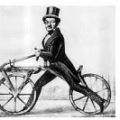<閱讀測驗>[題組:第48-51題]In 2015, President Obama of the USA signed the Every Student Succeeds Act (ESSA), replacing the Bush-era No Child Left Behind (NCLB) that had been in effect since 2001. This new Act provides states with more decision-making power regarding curriculum, instruction, and assessment. Below are some big-picture ideas influencing many states as they approach the assessment task.
One important idea is flexibility. For years, states have used standardized K-12 assessments, similar to the SAT and ACT for college application, to measure student achievement. They are easy to use, but they fail to give a complete picture of how a student is progressing. Thus, states are rethinking one-size-fits-all standardized assessments and are instead considering personalized, student-centered assessments in schools. Obviously, the task is difficult and time-consuming. Fortunately, modern technology can help solve this dilemma. For instance, computer adaptive assessments can automatically adjust questions based on a student’s performances on the previous questions. This mechanism prevents the computer from giving questions that are obviously too easy or too difficult for the student. It thus allows teachers to quickly assess a student’s level of understanding and provide instant feedback to help in the learning process.
Another idea is multi-subject testing. Several states have started to incorporate subjects beyond the traditional math and reading items in their K-12 assessments. All 50 states include tests on science at least twice prior to senior high school, and some are now starting to include social studies, government, or economics. Some states are also moving toward assessing multiple subjects on one test, for example, reading and social studies.
A third idea is the emphasis on students’ learning process. In pursuit of a student-centered approach, many states are putting more emphasis on assessments throughout the learning process rather than on traditional end-of-year summative tests. Teachers are encouraged to accumulate data at different points in their students’ learning process. These data together present a more complete picture of a student’s learning.
The last idea regards the purpose of assessment. Assessment should be used to inform both teachers’ instruction and students’ learning. Teachers can modify their teaching based on students’ performance on tests; students can identify their own problems and make plans for improvement.
48. Which of the following is the best title for this passage?
(A) Computers and Assessments
(B) The Four Components of ESSA
(C) Student-Centered Curriculum and Instruction
(D) From NCLB to ESSA, with a Focus on Assessment
答案



